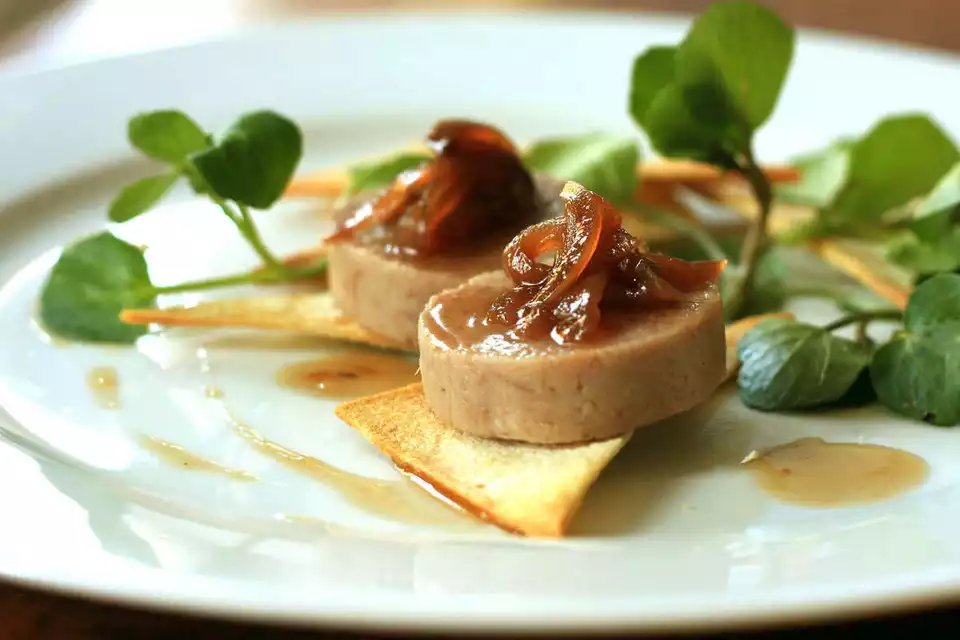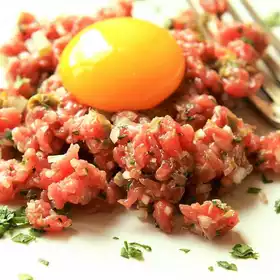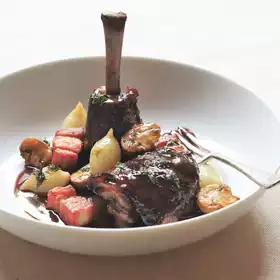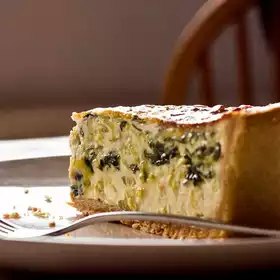I think it’s high time I put a recipe for duck up here. This bird is rich in taste, tender in texture and a deep red colour; winning attributes I’m sure you’ll agree. In the restaurant at work we have made duck confit, pan fried breast (cooked pink and juicy), terrine and rillettes. I also made some duck ham at home which was delicious. Duck’s versatility speaks for itself; there are a myriad different ways to prepare it. The best thing about it though is the thick layer of insulating fat under its skin which keeps the animal warm in freezing cold weather. For chefs this is the most indispensable part of the animal; the fat melts during cooking, keeping the meat beautifully moist and succulent. Excess fat collects in the bottom of the roasting tray but should never be thrown away! This is essential for your confit. This method of cooking meat was originally used for preservation, a form of charcuterie. Meat that had been lightly cured, then slowly and gently cooked in its own fat was then left to cool, the fat setting around the meat, completely sealing it from any moisture or bacteria from the air. When left for 5-6 months in a cool larder, the flavours had matured, resulting in a true authentic confit. It is not essential to mature your confit for quite this long; a fantastic flavour is still achievable in a few days
Duck Rillettes Recipe
Ingredients
- 4 duck legs
- 1 sprig thyme
- 1 star anise
- 1 bay leaf
- 400 ml duck fat, approx
- 200 g salt
- 1 blade mace
- 100 g sugar
- 1 clove
- 5 black peppercorns
Method
-
Firstly, make your cure mix. This can be as simple as just salt and sugar (ratio 2:1) but you may add extra flavourings and spices if you wish. For mine I used 200g salt, 100g sugar, and a small handful of spices: cloves, star anise, cinnamon, juniper berries, all finely ground.
-
Lightly sprinkle some of the cure mix onto the duck legs and rub into the flesh and skin. Cover, and leave in the fridge for 8 hours or overnight. Set the oven to 150C, and thoroughly wash the salt off the duck legs. Place in a casserole tray and cover with the duck fat, ensuring that they are completely covered. Add the thyme, bay leaf and peppercorns. Place in the oven for 3-4 hours or until the meat is extremely tender and falling off the bone.
-
Remove from the oven, and allow to cool slightly, then carefully strip all the meat from the bone, being careful to discard any sinew or gristle. Place the meat in a bowl and work with a spoon until the meat is finely shredded. Now add a few tablespoons of the duck fat and continue to work the mixture. You should have a smooth, moist paste. Add enough duck fat until this consistency is achieved. Taste, and adjust the seasoning. Roll into a cylinder in cling film and place in the fridge to set. Serve with melba toast, chutney and salad.




